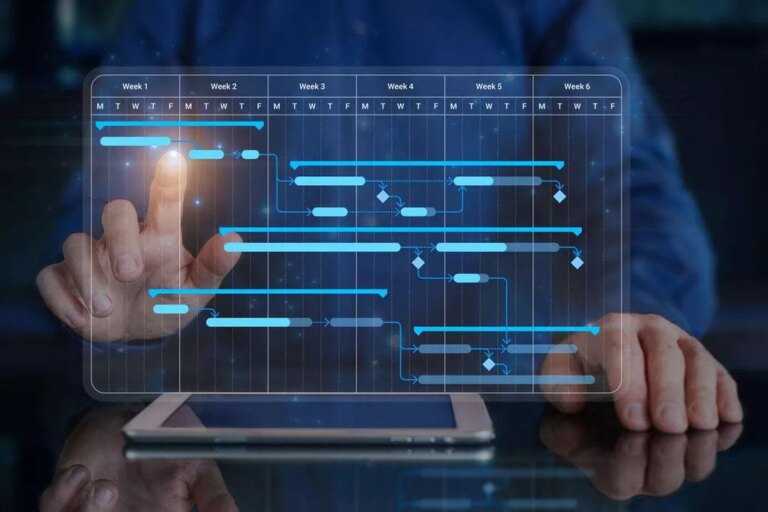In this meeting the Product Owner and the Development Team review the Product Backlog items. Larger Product Backlog items that need to be re-sized are split into smaller ones for tackling in the next Sprint or two. Product Backlog Refinement is not a timeboxed event only loosely defined in the Scrum Guide. A crucial guideline in Scrum for Product Backlog Refinement is that five to ten percent of every Sprint must be dedicated to Backlog Refinement.
I don’t see it as much of an issue and if these types of things occur, they are easy to coach around. By implementing backlog refinement as a collaborative and iterative process, you can also discover the true potential of your products, delivering business value that surpasses expectations. It is all about collaboration and alignment, ensuring all stakeholders are on the same page. They must have a shared understanding of the product vision, goals, and upcoming work.
Make sure to discuss any updates to the product backlog in terms of what was added, what was removed, what was re-order, and what was learned. This ensures that everyone is on the same page in terms of what is coming up next and the general direction based on the product goals, roadmap, and feedback. Estimate anything new to assess potential risks and identify possible spikes to run in the next sprint to increase learning and mitigate the risks. The answer to “who attends/” is “The scrum team decides.” Who are the people needed to be able to move refinement forward on the items being discussed? While backlog refinement is described in the Scrum Guide as an “ongoing activity,” it doesn’t occur spontaneously.
As a Product Owner, you have authority and responsibility over the Product Backlog. Every activity that affects the state of the Product Backlog can be seen as refinement. Assigning an estimation is not the same as getting an item in a ready state. Product backlog refinement would be a lot less difficult and time-consuming, if everyone involved agrees that an estimation is by default incorrect. If you cannot get past that point, any technique will result in the same frustration. If you do get everyone to agree on this, then you might consider the following techniques.
No one enjoys dealing with participants who are focused elsewhere and tuned out or ask you to repeat the question or conversation. Good backlog refinement processes will reduce the risk of items failing the sprint or taking longer than expected. They will expose risk and get all team members aligned with a shared understanding of the business problem. During product backlog refinement, the team identifies any dependencies between backlog items or with external factors. This includes examining technical dependencies, cross-functional dependencies, and any potential risks related to the items. A definition of ready can be helpful if it is used as a guideline and not as another gate that separates requirements from development.

Though some people treat product backlog refinement as one of the Scrum events, technically it is not one of the 4 events. However, product backlog refinement is often accomplished with a regular meeting. With each refinement session, the product backlog improves, becoming a well-tuned tool that drives efficiency, collaboration, and innovation. Set a time limit for the session and create an agenda that outlines the topics and activities to be covered. This helps manage time effectively and ensures that all important aspects of sprint planning meetings are addressed. Weekly sessions allow the team to consolidate the tasks completed in a week.
This agile refirement technique will help reconnect the leaders, business representatives, and subject matter experts with people who are much closer to the existing product’s challenge at hand. The team then has conversations to decide which stories are suitable for development in subsequent sprints and which stories need more work before they can https://www.globalcloudteam.com/techniques-and-practices-for-product-backlog/ be turned into features or full stories. The Scrum Guide goes on to say that up to 10% of the capacity of the Development Team may be used for backlog refinement. Document the session’s outcomes, including any decisions, refinements, or actions needed. Share the results with the team and stakeholders to maintain transparency and accountability.
Items are broken down until the Developers are fairly confident that they can complete them within a Sprint. This gives the Product Backlog a level of transparency that reduces the risk. The risk is exposed by not completing an item within a Sprint and thus giving away the opportunity to generate value for the organization. That is why refinement is an essential Product Management activity that successful Scrum Teams need to master. If the team is doing Backlog Refinement properly, they should be refining backlog items such as User Stories , to the point where they are in good shape and ready to pull into the next sprint.
There are five events in scrum, the sprint , sprint planning, the daily scrum, sprint review, and sprint retrospective. Product backlog refinement is an ongoing activity that paves the wave for future sprints. You want to avoid starving the team and give the product owner breathing room in case something comes up that prevents refinement, such as vacations, stakeholder meetings, illness, etc.

Instead, refine it just-in-time again and again as needed with more details as more is discovered. As it moves up the product backlog, we might consider addressing who benefits from the feature, what they need, and why they need it and write it as a user story. https://www.globalcloudteam.com/ As the user story moves further up the product backlog, we might consider adding acceptance criteria to further clarify the user story. As we discover more, we size it and consider splitting it into multiple user stories if it is too large or too complex.
The focus is on what is needed and why, rather than on how to solve the business need. Facilitate the decision-making process to reach a consensus on backlog item priorities, effort estimates, and potential refinements. If disagreements arise, work towards resolving them by encouraging open dialogue and seeking alignment. As the facilitator, ensure that you are well-prepared for the session. Review the backlog items and gather any necessary information or context beforehand. Identify any specific items or areas that require attention during the session.

Backlog refinement is an important part of the Agile and Scrum software development methodologies. According to the Scrum Guide, refinement is the process of breaking down and providing more specific details to product backlog items, making them smaller and more specific. In practice, this means that most Scrum Teams plan three time slots of each one hour, throughout the sprint where they spend time with the Product Owner and stakeholders.
They must also have strong leadership skills to motivate others to perform at their best. Let us dive more to understand backlog refinement, objectives of product backlog meetings, and more through our blog. The Product Backlog refinement is a continuous process to create actionable Product Backlogs. This competence of the Scrum team is critical to creating trust with the management and stakeholders as it allows for the regularly delivery of valuable Increments.